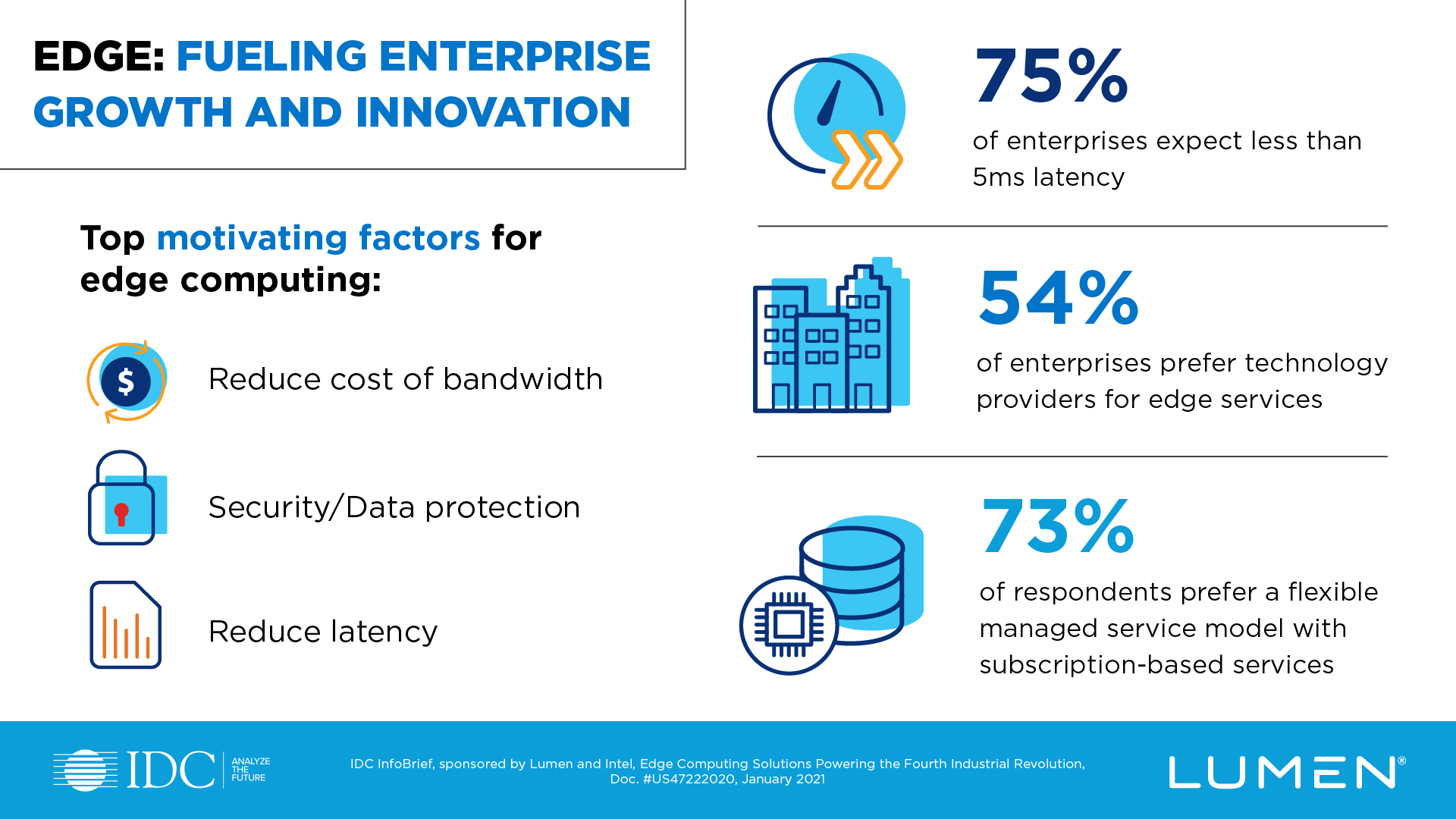Enterprises around the world are being confronted by a basic law of physics — distance neutralises speed, causing latency or a delay between an action and an application’s response.
Controlling latency has never been more important, whether data flows to a distributed workforce or a multitude of smart gadgets that make up the Internet of Things (IoT). Low latency is critical to help ensure smooth transport of data and for optimising application experiences.
Increasingly business executives are turning to solutions that move technology resources closer to where data is produced and consumed. A new global survey conducted by analyst firm IDC and sponsored by Lumen Technologies and Intel Corporation indicated two-thirds of global IT leaders are in the process of implementing Edge computing solutions.

90% of business leaders who participated in the survey specified they needed low latency of 10ms or less to ensure the success of their applications. In all, 75% said they require 5ms or less for Edge initiatives.
Better customer experience
“C-suite leaders across verticals are looking to edge computing solutions to achieve significant operational efficiencies and improved security and compliance by limiting movement of data,” says Ghassan Abdo, research vice president, WW telecom, virtualisation & CDN at IDC. “They also want to deliver better customer experiences. All of these priorities can be addressed through edge computing solutions.”
Edge solutions can help with latency issues inherent in centralised computing scenarios like the cloud by distributing resources closer to where data is generated and consumed. Latency can be significantly reduced when data can travel shorter distances. 40% of organisations surveyed plan to invest in new edge solutions in less than a year in part to help achieve real-time data consumption and analysis.
“It is clear that reducing the distance critical data must travel is seen as imperative to fueling growth and innovation for enterprises,” says Abdo. Nearly 75% of executives consider Edge computing a strategic investment, in part because the cost of bandwidth and a centralised infrastructure is seen as prohibitive. 54% were comfortable turning to a technology service provider to deliver edge solutions.

When considering new edge solutions, 73% of respondents noted they preferred a flexible managed service model with subscription-based services. This preference aligns with the popularity of consumption-based models across all industries, both business to business and business to consumer.
To view the IDC InfoBrief, “Edge Computing Solutions Powering the Fourth Industrial Revolution,” (Doc. #US47222020, January 2021), Click here.
Survey details:
- The survey respondents include 800 IT and operational technology decision makers (director level or above) split equally across seven industries including energy, logistics, government/public sector, healthcare, retail, manufacturing, and retail banking.
- Participants worked in countries including the United States, India, United Kingdom, Canada, Australia, and Singapore.
- Roughly 30% of respondents were from organisations with more than 10,000 employees, and 70% were from organisations between 1,000 to 10,000 employees.
Comment on this article below or via Twitter: @VanillaPlus OR @jcvplus






